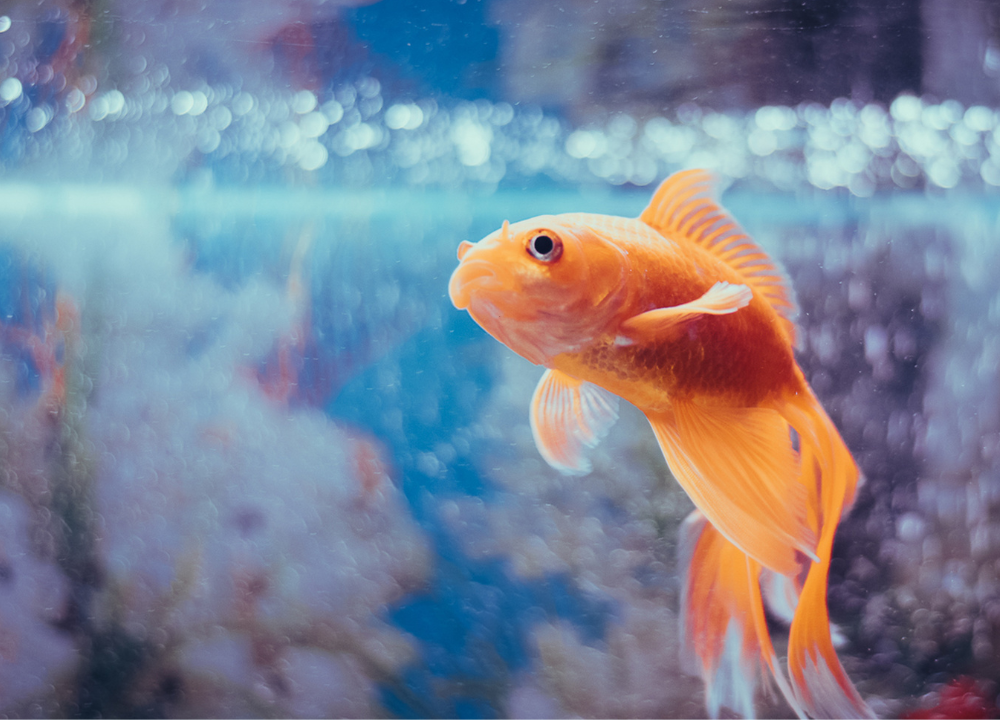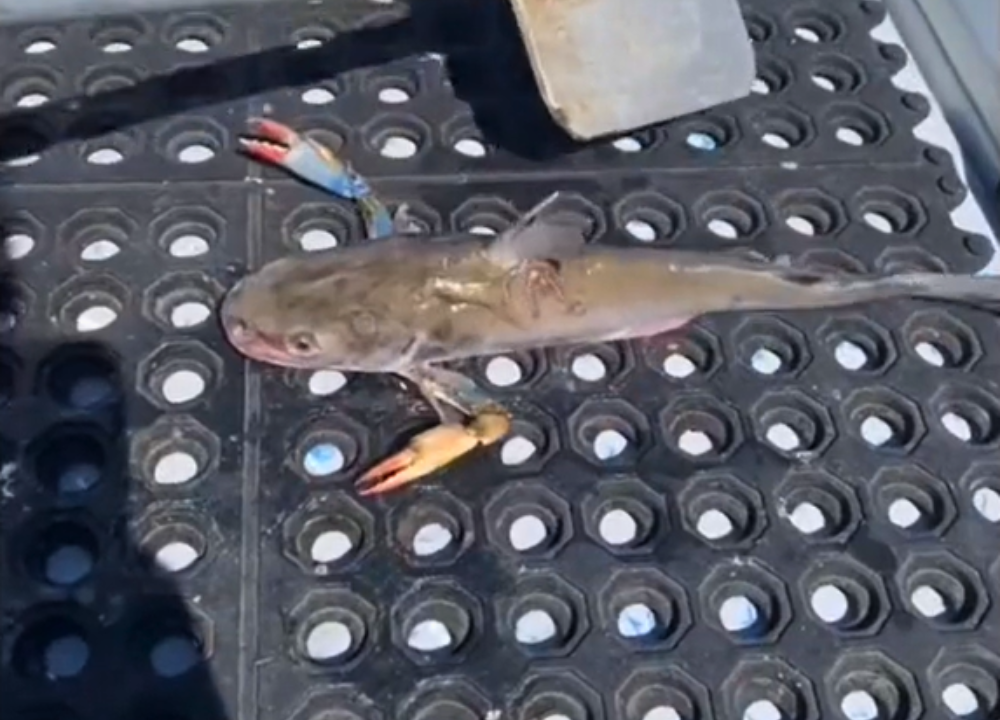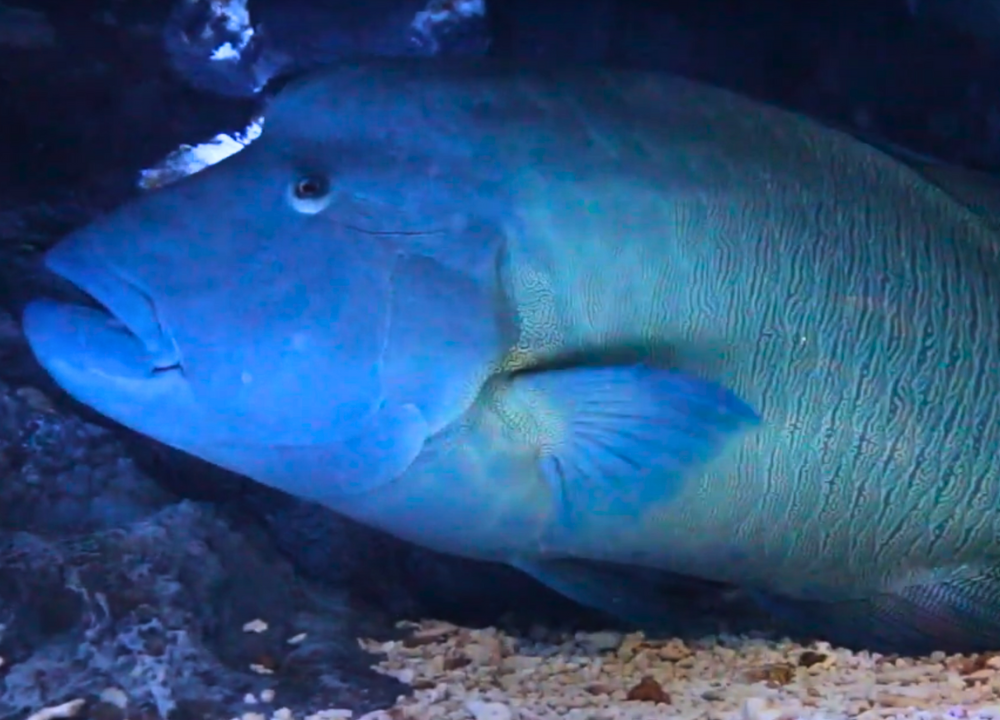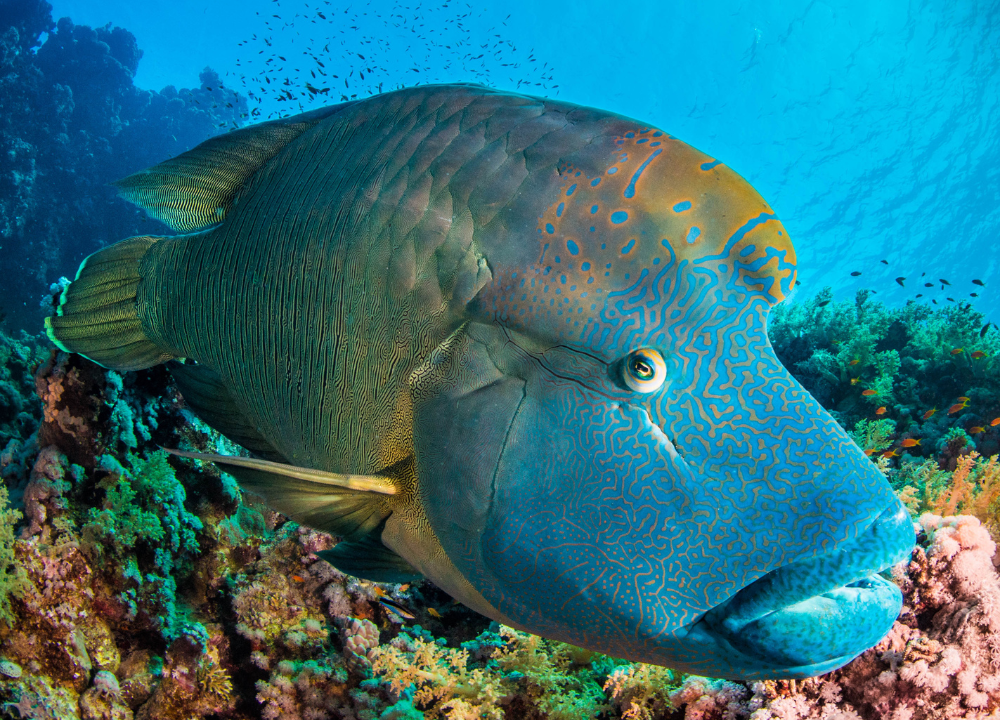Fish can lay anywhere from a few eggs to several million, depending on the species. For example, the tiny clownfish may lay around 100 eggs, while a sturgeon can produce millions.
Fish reproduction is a fascinating aspect of marine biology, with a vast array of species exhibiting diverse reproductive strategies. The number of eggs laid by a fish is a trait that varies widely among different species, influenced by factors like environmental conditions, survival rates, and biological adaptations.
The prolific nature of fish reproduction ensures the survival of species despite predators and natural challenges. Some fish, like the common goldfish, lay hundreds of eggs in a single breeding session, whereas others, like certain types of sharks, produce a handful of well-developed eggs or live young.
Table of Contents
Egg Production Process
The world of fish is vast and varied, and so is their egg production process. Different species lay different amounts of eggs, with numbers ranging from a mere few to millions. This fascinating aspect of fish biology not only affects population dynamics but also has significant implications for ecosystems and human activities such as fishing and aquaculture. In this section, we’ll dive into the egg production process, starting with the maturation of eggs and followed by the spawning behavior of these aquatic creatures.
Maturation Of Eggs
The journey of a fish egg begins long before it is laid. Egg maturation is a critical phase in a fish’s life cycle. This process involves several stages, and its success is key to the survival of the species. Let’s look at how this happens:
- Development inside the ovaries: Eggs, or oocytes, develop within the female fish’s ovaries. This happens over time and requires the right conditions.
- Hormonal changes: As fish near spawning, hormones trigger the final maturation of the eggs.
- Nutrient accumulation: Eggs accumulate yolk, which provides nutrients for the embryos after fertilization.
The number of eggs a fish can produce varies widely. Some factors that influence this include species, size, age, and environmental conditions. A table of different species and their egg production can provide a clear picture:
| Species | Average Number of Eggs Per Cycle |
|---|---|
| Goldfish | Up to 1,000 |
| Salmon | 1,000 – 5,000 |
| Tuna | Millions |
Egg maturation ends when the female is ready to release her eggs into the water, a process known as spawning.
Spawning Behavior
Spawning is a crucial event in the life of fish. It is the moment when eggs are released and fertilization occurs. Different species have unique behaviors to ensure the successful spread of their genes. Here’s a glimpse into spawning behavior:
- Timing: Many species spawn at specific times of the year, often influenced by water temperature and daylight hours.
- Location: Some fish travel great distances to reach ideal spawning grounds. These areas offer protection and food for the offspring.
- Methods: Fish may spawn in groups or pairs. Some release eggs freely into the water, while others lay them on surfaces.
The spawning process is vital for egg fertilization and varies between species. For instance, external fertilizers like salmon release eggs and sperm into the water simultaneously. In contrast, internal fertilizers like guppies have direct fertilization within the female’s body. The table below highlights these differences:
| Species | Spawning Type |
|---|---|
| Salmon | External Fertilization |
| Guppy | Internal Fertilization |
| Clownfish | Surface Layers |
After spawning, the next challenge for the eggs is to develop and hatch into larvae, starting the cycle anew. The fascinating and complex spawning behaviors of fish ensure the continuation of their species in the diverse and dynamic underwater world.
Factors Affecting Egg Laying
Have you ever wondered how many eggs fish lay? Well, it varies a lot. Different fish have different ways of laying eggs. Some lay a few, while others lay millions. But what affects how many eggs they lay? Let’s dive into the factors that influence egg laying in fish.
Environmental Conditions
Several environmental conditions impact how many eggs fish lay. These conditions include water temperature, availability of food, and the presence of predators. Let’s break down how each factor plays a role:
- Water Temperature: Fish in warmer waters often lay more eggs. Warmer temperatures speed up egg development.
- Food Availability: More food means more energy for laying eggs. Fish in nutrient-rich waters tend to lay more eggs.
- Predation: If there are many predators, fish might lay more eggs. This increases the chances of survival for their offspring.
Here’s a simple table showing how these conditions affect egg laying:
| Condition | Impact on Egg Laying |
|---|---|
| Warm Water | Increases egg laying |
| High Food Availability | Increases egg laying |
| High Predation | May increase egg laying |
Species-specific Influences
Not all fish are the same. The type of species greatly influences how many eggs are laid. Factors such as body size and life expectancy play a big role. Here are some key points:
- Body Size: Generally, larger fish lay more eggs. They have more space to carry them.
- Life Expectancy: Fish with shorter lifespans might lay more eggs at once. They have fewer chances to reproduce.
- Reproductive Strategy: Some fish lay eggs in safe places. Others scatter them widely. This strategy affects the number of eggs laid.
Let’s look at some examples:
| Fish Species | Average Eggs Laid |
|---|---|
| Salmon | 1,000 to 5,000 |
| Tuna | Up to 10 million |
| Clownfish | 100 to 1,000 |
As you can see, the number of eggs fish lay is influenced by both their environment and their species. Understanding these factors helps us protect and preserve fish populations.
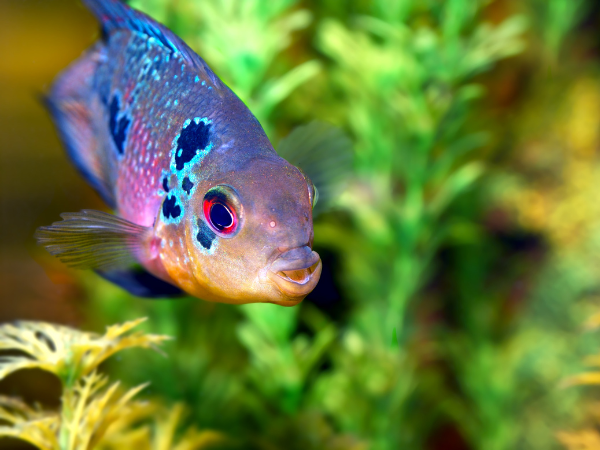
How Many Eggs Do Fish Lay Atlantic Cod?
Have you ever wondered about the incredible world of fish reproduction? Among the vast array of species, the Atlantic Cod stands out with its astonishing reproductive capabilities. Let’s dive into the fascinating lifecycle of this fish and discover the sheer number of eggs it can lay.
Reproductive Habits
The Atlantic Cod, scientifically known as Gadus morhua, is a marvel when it comes to reproduction. Female cod are prolific spawners. They release a staggering number of eggs during their spawning season. These eggs, also known as roe, are laid in large quantities to increase the chance of survival against predators and environmental challenges.
- Size Matters: Larger females can lay more eggs.
- Spawning Season: Occurs mainly in the spring.
- Location: Prefers cold, deep waters for laying eggs.
Here’s a quick overview of the number of eggs Atlantic Cod can lay:
| Size of Female Cod | Approximate Number of Eggs |
|---|---|
| Small | 500,000 |
| Medium | 2-5 million |
| Large | Up to 9 million |
After the eggs are laid, they float freely in the water column. The survival rate of these eggs to maturity is low due to predation and environmental factors.
Human Impact
Human activities have a significant effect on the Atlantic Cod and its ability to reproduce successfully. Overfishing has been a major concern, depleting cod numbers and affecting the age and size of spawning cod. This has a direct impact on the number of eggs laid and the survival of the species.
- Fishing Pressure: Reduces the number of mature fish.
- Habitat Disruption: Affects spawning grounds.
- Climate Change: Alters water temperatures and spawning times.
Conservation efforts are crucial to ensure the sustainability of Atlantic Cod populations. Measures like fishing quotas and protected areas help maintain a balanced ecosystem. Such initiatives aim to give the cod a chance to recover and continue their role in the marine food web.
How Many Eggs Do Fish Lay Clownfish?
When exploring the reproductive mysteries of aquatic life, one fascinating question surfaces: How many eggs do fish lay?
This number varies widely among species, with some laying thousands, while others, only a few.
Among these diverse breeders, the clownfish stands out with its unique spawning traits.
Let’s dive into the world of clownfish and discover the specifics of their egg-laying process.
Reproductive Habits
Clownfish are known for their striking orange color and distinctive white bands, but their reproductive habits are just as intriguing.
These fish form monogamous pairs and exhibit a fascinating spawning routine.
The female clownfish can lay hundreds of eggs at a time.
These eggs are typically deposited on flat surfaces near the sea anemones they call home.
The breeding pair takes turns caring for the eggs, which involves fanning and guarding them against predators.
- Egg laying frequency: Once every two weeks to a month.
- Spawning season: Heavier in warmer months.
- Egg incubation: 6 to 10 days.
The number of eggs laid can be influenced by factors such as water temperature, diet, and overall health.
Here’s a glimpse into the number of eggs clownfish lay:
| Clownfish Species | Average Eggs Per Spawn |
|---|---|
| Ocellaris Clownfish | 100-300 |
| Maroon Clownfish | 200-1500 |
| Tomato Clownfish | 300-500 |
Habitat And Care
The habitat of a clownfish plays a crucial role in its reproductive success.
These fish are reef-dwelling species found in the warm waters of the Pacific and Indian Oceans.
They form a symbiotic relationship with sea anemones, which provide protection and food scraps.
In captivity, creating a conducive environment for egg laying is essential.
This involves maintaining optimal water conditions and providing a diet rich in nutrients.
Here are key care points for encouraging clownfish to spawn:
- Water temperature: 75-80°F (24-27°C).
- pH levels: 7.8-8.4.
- Water flow: Moderate to mimic natural reef currents.
- Diet: Varied, including frozen shrimp, pellets, and flakes.
Adequate shelter, such as rocks or clay pots, can also provide a suitable surface for the clownfish to lay their eggs.
Regular water changes and proper filtration keep the environment clean, which is vital for the eggs’ survival.
For those looking to breed clownfish, understanding their needs and mimicking their natural habitat as closely as possible is key.
With the right care, clownfish can thrive and reproduce, contributing to the fascination and joy of marine aquarium keeping.
How Many Eggs Do Fish Lay Goldfish?
Have you ever wondered about the fascinating world of fish reproduction, particularly how many eggs goldfish lay? Goldfish, with their shimmering scales and graceful movements, are a favorite among fish enthusiasts. Let’s dive into the details of their reproductive secrets and understand the numbers behind their egg-laying habits.
Reproductive Habits
The number of eggs a goldfish can lay varies widely. It depends on factors like size, age, and health. A healthy female goldfish can lay several hundred eggs in one breeding season. These are the key points to remember:
- Season: Goldfish typically breed in the spring.
- Spawning: The process starts when water temperatures rise.
Their eggs, often called spawn, are sticky and attach to underwater vegetation. Here’s a quick overview:
| Age of Goldfish | Average Eggs per Season |
|---|---|
| 1-2 years | 500-1,000 |
| 3+ years | Up to 2,000 |
This table shows that as goldfish mature, they tend to lay more eggs. It’s crucial to maintain a clean habitat to ensure the eggs develop properly.
Breeding In Captivity
Breeding goldfish in tanks or ponds requires careful planning and attention. The environment must mimic natural conditions to trigger spawning. Here’s what you need to know:
- Temperature: Gradually increase the water temperature to around 68°F (20°C).
- Feeding: Provide a high-protein diet to encourage egg production.
- Plants: Add plants where goldfish can lay their eggs.
After the eggs are laid, they should be moved to a separate tank. This prevents the adult goldfish from eating them. Here’s a simple care guide for the eggs:
- Keep the water clean and well-oxygenated.
- Monitor the temperature closely.
- Watch for signs of hatching after 4 to 7 days.
With the right conditions, you can successfully breed goldfish and watch the tiny fry emerge. Remember, breeding goldfish can be a rewarding experience if done with care and knowledge.
Egg Development And Survival
Have you ever wondered about the early stages of life beneath the waves? Fish eggs are the start of a new generation, but how many do fish lay and what happens after? Different species can lay from just a few eggs to several million! Egg development and survival are crucial for fish populations. Each species has unique strategies to ensure their eggs hatch.
Incubation Period
The time from when a fish lays her eggs to when they hatch is known as the incubation period. This period varies widely among species and is influenced by water temperature and oxygen levels. For instance:
- Salmon: They may take about 60-200 days to hatch.
- Tropical Fish: These species often have shorter periods, sometimes only a few days.
Environmental conditions are critical during this time. Eggs need the right temperature and oxygen to develop properly. A stable environment helps ensure a high survival rate. Look at the table below to see how this period differs among various species.
| Species | Incubation Period |
|---|---|
| Goldfish | 48-72 hours |
| Clownfish | 6-11 days |
| Cichlids | 3-10 days |
Challenges To Egg Survival
Although fish lay many eggs, not all survive to adulthood. Eggs face numerous challenges:
- Predators: Many animals feed on fish eggs, including other fish.
- Environment: Pollution, temperature shifts, and low oxygen can harm eggs.
- Disease: Fungal and bacterial infections can destroy entire batches of eggs.
For instance, salmon eggs are often eaten by birds and small mammals. In coral reefs, cleaner fish and invertebrates may consume eggs. The survival of eggs depends on the parents’ strategies to protect them, like hiding them or guarding the nest. Despite these challenges, some eggs will survive, continuing the species’ legacy.
Human Impact On Fish Egg Laying
Fish lay eggs in numbers that can range from a few dozen to millions, depending on the species. Yet, human activities have a profound impact on the reproductive success of these aquatic creatures. Overfishing, habitat destruction, and pollution alter the delicate balance of marine ecosystems, influencing how many eggs fish can lay and the survival rate of those eggs.
Pollution Effects
Pollution is a major threat to fish reproduction, with numerous substances harming egg production and development. Here’s how:
- Chemicals: Toxins such as heavy metals and pesticides disrupt hormonal balances, affecting egg laying.
- Plastics: Microplastics can be ingested by fish, leading to internal damage and reproductive issues.
- Oil Spills: Oil coats eggs, preventing oxygen absorption and leading to high mortality rates.
These pollutants result in decreased egg counts and compromised egg health. The table below highlights the stark contrast in egg laying capacities under different pollution levels for a common fish species:
| Environment | Average Eggs Laid |
|---|---|
| Clean Water | 10,000 |
| Moderately Polluted | 5,000 |
| Heavily Polluted | 1,000 |
Conservation Efforts
Conservation efforts aim to counter the negative impacts humans have on fish egg laying. These include:
- Marine Protected Areas (MPAs): Regions where fishing is restricted to boost fish populations and safeguard habitats.
- Legislation: Laws that limit pollution, manage fisheries, and protect endangered species.
- Restoration Projects: Initiatives to restore habitats like coral reefs and mangroves, essential for fish breeding.
These efforts create healthier environments for fish, thus improving egg laying rates and juvenile fish survival. The following points illustrate the positive outcomes of conservation:
- Better water quality leads to more robust egg production.
- Restored habitats provide safe havens for egg laying.
- Reduced pollution levels ensure higher egg and larval survival rates.
Continued conservation work is critical for the sustainability of fish populations and the broader ocean ecosystem.
Egg Laying Strategies
Fishes show amazing variety in how many eggs they lay. Some lay thousands, while others just a few. The strategies they use for laying eggs are as diverse as the species themselves. Let’s dive in and see how different fishes ensure their young survive through their egg-laying tactics.
Adaptations For Survival
Each fish species has adapted to its environment in unique ways to maximize the survival of its offspring. These adaptations can be fascinating:
- Number of Eggs: Some species, like the salmon, lay thousands of eggs at once, hoping that at least a few will survive to adulthood.
- Nesting: Others, such as the stickleback, build intricate nests to protect their eggs from predators.
- Egg Scattering: Many fish, like the common carp, scatter their eggs over a wide area, which reduces the chance of all eggs being eaten by a single predator.
Some fish even show parental care, guarding their eggs until they hatch. This increases the chances of survival for the eggs but can be risky for the parents.
Here’s a quick look at the number of eggs laid by different species:
| Fish Species | Average Number of Eggs |
|---|---|
| Salmon | 1,000 – 5,000 |
| Stickleback | 100 – 300 |
| Common Carp | Up to 300,000 |
Reproductive Trade-offs
Fish must balance the energy they put into each egg with the total number of eggs they lay. This balance is critical and is known as the reproductive trade-off. Here are some key points:
- Large Eggs: Fish that lay large eggs usually lay fewer of them. These eggs often have more yolk, giving the hatchlings a better start in life.
- Small Eggs: Conversely, fish that lay small eggs tend to lay many. This strategy bets on quantity over quality, spreading the risk among many offspring.
- Parental Investment: Some fish invest time and energy into caring for their eggs and young. This can mean fewer eggs but a higher survival rate for those cared for.
These strategies reflect a balance between the quantity of eggs and the quality of care each egg receives. It’s a delicate dance between the energy a parent can provide and the harsh realities of aquatic life.
Let’s look at the trade-offs in some specific species:
| Fish Species | Egg Strategy | Survival Rate |
|---|---|---|
| Bettas | Fewer, larger eggs | Higher with parental care |
| Surgeonfish | Many, small eggs | Lower, scattered widely |
| Cichlids | Fewer eggs, mouthbrooding | Higher with intense parental care |
Frequently Asked Questions
How Many Eggs Does Each Fish Lay?
The number of eggs a fish lays varies widely among species. Some lay a few dozen, while others release millions. Factors influencing this include the fish’s size, habitat, and species. Generally, smaller fish tend to lay fewer eggs, whereas larger species can lay up to several million.
Why Does A Fish Lay Thousands Of Eggs In Water?
Fish lay thousands of eggs to increase the chances of offspring survival. High predation and environmental challenges lead to many eggs not hatching or surviving to adulthood.
Which Fish Lays The Most Eggs?
The ocean sunfish, or Mola mola, lays the most eggs, with a single female capable of producing up to 300 million eggs at once.
Why Do Some Species Of Fish Release Hundreds Of Eggs At The Same Time?
Some species of fish release hundreds of eggs simultaneously to increase survival rates. This strategy compensates for high predation and environmental risks. By producing numerous offspring, the chances of some reaching adulthood improve significantly, ensuring the continuation of the species.
Conclusion
Understanding the reproductive habits of fish reveals a fascinating range of egg-laying behaviors. From the thousands laid by some species to the careful nurturing of a few by others, fish offer a vivid glimpse into nature’s diversity. This exploration underscores the marvels of aquatic life, inviting further curiosity and respect for these underwater inhabitants.
